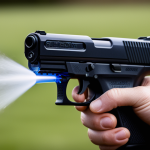Overview of Turf Innovations
Modern turf technology advancements have revolutionised football training environments, offering solutions tailored to player needs and performance standards. As the world shifts towards more sustainable and high-performing options, understanding these innovations becomes critical for both coaches and players.
Football training environments rely heavily on the quality of turf, impacting player performance and safety. It is crucial to select the appropriate turf materials to create optimal training conditions. Over recent years, developments in turf technology advancements have introduced a wide range of materials, from natural grass hybrids to advanced synthetic turfs. These innovations are designed to mimic natural grass while offering durability and enhanced player safety.
Have you seen this : Effortless Assimilation: Top Strategies for Football Clubs to Smoothly Onboard New Players
There are several turf materials currently in use, each with unique characteristics. Options range from hybrid turfs, which blend natural grass with synthetic fibres, to fully synthetic surfaces. These advancements not only aid in maintaining consistency in playing conditions but also contribute to reducing maintenance efforts and costs.
By integrating modern turf technology, training facilities can significantly enhance their offerings, leading to improved team performance and player satisfaction. As the landscape of football training continues to evolve, staying informed about these innovations becomes essential for maintaining competitive edges.
Have you seen this : Key Components for a Winning Football Training Camp: Empowering Teams to Achieve Victory
Impact on Player Performance
In the realm of football training effectiveness, innovative turf significantly enhances player performance by optimizing agility and speed. Players often question: “How does using advanced turf influence performance?” The answer lies in its ability to maintain consistent traction, allowing better control and movement, regardless of weather conditions. Furthermore, synthetic turf innovations ensure an even surface, reducing the risk of unpredictable terrain.
When comparing training sessions conducted on natural grass versus synthetic turf, studies demonstrate that players experience a noticeable boost in speed and precision on the latter. The uniformity of the turf contributes to decreased slippage, providing reliable footing. However, some critics argue that the artificial feel of synthetic surfaces fails to replicate the true experience of natural grass.
Sports scientists have extensively evaluated the effects of turf technology advancements on player outcomes, attributing performance enhancements to the engineered resilience and shock absorption properties of modern surfaces. This allows players to exhibit freedom of motion without the concerns associated with traditional grasses.
In conclusion, while both artificial and natural turfs have their merit, the choice between them heavily impacts football training effectiveness, reinforcing the importance of selecting the right surface to maximize player potential and minimize risk.
Safety Considerations
In the realm of player safety in football training, selecting the right turf is crucial. The type of surface can significantly influence injury rates. Synthetic turf often provides a consistent playing surface, reducing the risk of unexpected trips or slips, which are common injury causes. However, some players and experts worry about the higher heat levels associated with synthetic materials, potentially leading to heat-related injuries.
Materials used in modern turf are engineered to enhance safety. For instance, shock-absorbing layers are incorporated to cushion impacts, helping to minimize joint stress and related injuries. Natural grass, with its softer texture, traditionally offers a more forgiving surface for falls, but it may not maintain its integrity in adverse weather, increasing slip risks.
Sports safety organizations emphasize selecting turf that balances traction with cushioning. Their recommendations often highlight quality maintenance practices, which are vital to retain turf functionality, whether synthetic or natural. These practices ensure that surfaces remain safe year-round, sustaining the longevity of the turf while promoting player safety.
Understanding these safety dynamics is essential for decision-makers in football training environments, guiding them toward informed choices that protect players without compromising performance.
Case Studies of Turf Applications
In the ever-evolving landscape of football training, several notable programs have embraced turf technology advancements with remarkable results. One such example is the training facility at Ajax, which adopted a hybrid turf system, blending natural grass with synthetic fibers. This innovation has enhanced their training outcomes, allowing players to experience consistent, high-quality surfaces that support intense drills without the risk of wear and tear typically associated with natural grass.
A success story from the University of Oregon highlights the benefits of fully synthetic turf technology advancements. Their football program saw improved player agility and reduced injuries after transitioning to this innovative surface. The move was driven by a desire to maintain consistent playing conditions irrespective of weather fluctuations.
The decision-making process behind adopting new turf at these facilities involved comprehensive assessments of player needs and performance goals. Factors such as football training effectiveness, maintenance costs, and long-term benefits were carefully weighed against potential drawbacks. These real-world implementations demonstrate how strategic usage of turf technology can significantly uplift training experiences and athlete performance, affirming the importance of selecting the right surface to meet specific goals.
Expert Opinions and Testimonials
In navigating the field of turf innovations, expert insights offer invaluable guidance. Coaches and sports scientists consistently emphasize the transformative impact of advanced turf on training regimens. According to renowned sports scientist Dr. Emily Waters, modern turf technologies “reduce the instance of training injuries significantly.” This claim is supported by her research linking modern turf’s shock absorption with injury prevention.
Testimonials from players themselves further underline these benefits. Players report a marked improvement in football training effectiveness, citing enhanced agility and reduced fatigue as major advantages. Jake Thompson, a professional footballer, notes, “The consistency and grip of the new turf allow for more aggressive play without worry of slipping.”
Industry experts also voice opinions on future turf technology advancements. John Smith, an experienced turf consultant, predicts further innovation in turf engineering, with a focus on sustainability and performance. He highlights upcoming developments in eco-friendly materials that maintain high performance without sacrificing environmental responsibility.
These evaluations collectively shape a promising future for turf technology, where player safety, performance, and ecological considerations are harmoniously balanced. Understanding and integrating these expert insights can guide more informed decisions in training environments, paving the way for innovation-driven success.
Practical Applications in Training Regimens
Innovative turf technology advancements provide new strategies for integrating turf innovations into football training regimens. A crucial first step is choosing the appropriate turf type to complement existing training routines. Modern synthetic and hybrid turfs are increasingly favoured for their durability and consistent performance characteristics. Coaches can maximize their programs by selecting surfaces aligning with training objectives, such as fostering speed and agility.
For effective maintenance of turf innovations, regular assessments are recommended to ensure safety and performance standards. Synthetic turfs require attention to infill levels and periodic cleaning to preserve their condition. Meanwhile, hybrid turfs need tailored care that considers both natural and synthetic components.
Training drills—like sprints and ball control exercises—may benefit specifically from synthetic turf due to its reliable traction. Conversely, practicing elements like tackling might favour natural grass or hybrids for a softer landing surface, adding variety to regimen planning. The key is implementing turf innovations that enhance specific skill sets.
Incorporating diverse turf options can offer players a comprehensive training environment, catering to their development and safety requirements while optimizing overall game readiness.
Benefits and Drawbacks of Turf Innovations
Turf technology advancements have brought numerous benefits to football training, yet they also come with challenges. On the positive side, modern turf provides consistent playing conditions, enhancing player agility and reducing the unpredictability of natural grass. This stability enables athletes to train with precision and confidence, leading to improved performance metrics.
The pros and cons of synthetic turf often fuel industry debates. Benefits include reduced maintenance requirements and extended usage irrespective of weather conditions. However, some coaches highlight concerns about the artificial surface’s heat retention and the absence of the natural feel traditional grass provides. These factors can influence player comfort and training experiences.
The financial aspect is critical when integrating synthetic turfs. While initial installation may be costly, the long-term savings in maintenance and water usage balance the expenses. Yet, decision-makers must weigh these economic factors against potential enhancements in football training effectiveness.
Ultimately, the choice to implement advanced turf must align with a team’s specific training objectives and resources. Insight from players and coaches is essential to address concerns such as playing feel and safety, helping to harmonize the benefits and drawbacks effectively.


